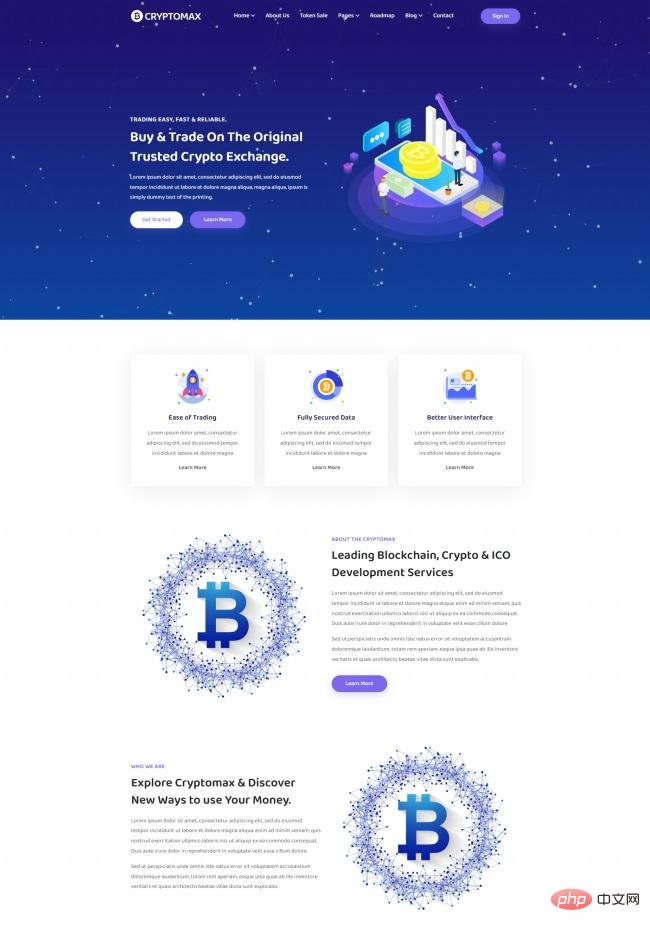current location: Home > Download > Learning resources > Web page production > "HTML5 Mobile Web Development Practice"

"HTML5 Mobile Web Development Practice"
| Classify: Learning materials / Web page production | Release time: 2017-12-25 | visits: 3053623 |
| Download: 282 |
Latest Downloads
Horror Beat Phase Maker
Himalayan Children
Zebra AI
Supermarket Manager Simulator
Red Alert Online
Delta Force
Pokémon UNITE
Fantasy Aquarium
Girls Frontline
Wings of Stars
24 HoursReading Leaderboard
- 1 Ouyi Ouyi Ouyi Ouix Ouyi Global Station Login Home Page
- 2 What are the quantum chain trading platforms?
- 3 How to trade quantum chains
- 4 What are the hybrid blockchain trading platforms?
- 5 Popular science in the currency circle: What is the difference between decentralized exchanges and hybrid exchanges?
- 6 Recommended essential software for currency contract parties
- 7 The top ten leveraged exchanges with the lowest liquidation rate (latest ranking in 2025)
- 8 Ranking of leveraged exchanges in the currency circle The latest recommendations of the top ten leveraged exchanges in the currency circle
- 9 The official website address of the well-known digital currency exchange (2025 top ten in the world)
- 10 Ethereum cross-chain trading app_What are the Ethereum cross-chain trading software?
- 11 Which Bitcoin futures exchange is global?
- 12 Top 10 trading platforms in the currency circle, Top 10 regular trading platforms for cryptocurrency (2025 edition)
- 13 Which exchanges in the currency circle are more popular? A list of the most popular exchanges in the currency circle in 2025
- 14 Currency Circle Contract Trading Platform Ranking 2025
- 15 Meme Coins May Be Solana (Sol) Secret Weapon, To $1,000
Latest Tutorials
-
- Go language practical GraphQL
- 3164 2024-04-19
-
- 550W fan master learns JavaScript from scratch step by step
- 4496 2024-04-18
-
- Getting Started with MySQL (Teacher mosh)
- 2503 2024-04-07
-
- Mock.js | Axios.js | Json | Ajax--Ten days of quality class
- 3212 2024-03-29
HTML5 Mobile Web Development Practice Content introduction:
Today, mobile application development has set off a new wave in the software industry. However, mobile devices are developing rapidly, with different screen sizes, storage and performance limitations. How to create high-performance, responsive mobile websites on multiple platforms is the primary challenge that programmers face.
"HTML5 Mobile Web Development in Practice" provides solutions to this challenge. By reading this book, you'll learn how to effectively leverage the latest HTML5 mobile-specific features across multiple mobile platforms. The book is divided into 10 chapters, starting from the perspectives of mobile Web, device-side configuration and optimization, interaction, responsive design, device access, debugging, performance testing, rich media, etc. It contains more than 60 practical instructions, explaining in detail how to Build fast, responsive HTML5 mobile websites, suitable for many mainstream mobile application platforms such as iOS, Android, Windows Phone and BlackBerry.
The author of "HTML5 Mobile Web Development Practice" is a member of the HTML5 Boilerplate project and the main developer of MobileBoilerplate (http://h5bp.com/mobile). "HTML5 Mobile Web Development in Practice" is tailor-made for programmers who are committed to implementing high-performance, responsive, cross-platform HTML5 mobile websites. It is also suitable as a learning reference for readers interested in mobile Web development.
HTML5 Mobile Web Development Practice Table of Contents:
Chapter 1 HTML5 and mobile websites
1.1 Introduction
1.2 Determine the mobile devices suitable for the website
1.2.1 What platforms and browsers are most commonly used by users
1.2.2 How many users use mobile devices that support modern scripts
1.2.3 Alternatives to Google Analytics
1.2.4 Accuracy of Google Analytics
1.2.5 Concerns about the server’s reading speed
1.3 Configuring mobile development tools
1.3.1 Preparation
1.3.2 Practice
1.3.3 Review
1.3.4 Extension
1.4 BlackBerry Emulator
1.4.1 Preparation
1.4.2 Practice
1.5 Configuring mobile development environment
1.5.1 Preparation
1.5.2 Practice
1.5.3 Review
1.5.4 Extension
1.6 Using HTML5 in mobile websites
1.6.1 Preparation
1.6.2 Practice
1.6.3 Review
1.6.4 Extension
1.7 Cross-browser HTML5
1.7.1 Preparation
1.7.2 Practice
1.7.3 Review
1.7.4 Extension
1.8 Mobile design
1.8.1 Preparation
1.8.2 Practice
1.8.3 Review
1.8.4 Extension
1.9 Define a content strategy
1.9.1 Preparation
1.9.2 Practice
1.9.3 Review
1.9.4 Extension
Chapter 2 Configuration and Optimization of Mobile Terminal
2.1 Introduction
2.2 Start the web application through the interface icon
2.2.1 Preparation
2.2.2 Practice
2.2.3 Review
2.2.4 Extension
2.2.5 Reference
2.3 Avoid text font size reset
2.3.1 Preparation
2.3.2 Practice
2.3.3 Review
2.3.4 Extension
2.4 Optimize browser viewport width setting
2.4.1 Preparation
2.4.2 Practice
2.4.3 Review
2.4.4 Extension
2.5 Fix the re-flow scale problem of mobile version of Safari
2.5.1 Preparation
2.5.2 Practice
2.5.3 Review
2.5.4 Extension
2.6 Start mobile phone native applications in the browser
2.6.1 Preparation
2.6.2 Practice
2.6.3 Review
2.6.4 Extension
2.7 Start full screen mode on iPhone
2.7.1 Preparation
2.7.2 Practice
2.7.3 Review
2.7.4 Extension
2.8 Prevent iOS from automatically zooming when focusing
2.8.1 Preparation
2.8.2 Practice
2.8.3 Review
2.8.4 Extension
2.9 Disable or limit some WebKit features
2.9.1 Preparation
2.9.2 Practice
2.9.3 Review
2.9.4 Extension
Chapter 3 Interaction Methods of Mobile Devices
3.1 Introduction
3.2 Use touch to move page elements
3.2.1 Preparation
3.2.2 Practice
3.2.3 Review
3.2.4 Extension
3.2.5 Reference
3.3 Detecting and processing horizontal and vertical screen switching events
3.3.1 Preparation
3.3.2 Practice
3.3.3 Review
3.3.4 Extension
3.3.5 Reference
3.4 Use gestures to rotate page elements
3.4.1 Preparation
3.4.2 Practice
3.4.3 Review
3.4.4 Extension
3.4.5 Reference
3.5 Use sliding to create a gallery
3.5.1 Preparation
3.5.2 Practice
3.5.3 Review
3.5.4 Extension
3.5.5 Reference
3.6 Use gestures to operate image zoom
3.6.1 Preparation
3.6.2 Practice
3.6.3 Review
3.6.4 Extension
3.6.5 Reference
Chapter 4 Building a Fast and Responsive Mobile Internet Site
4.1 Introduction
4.2 Use HTML5 syntax to build pages
4.2.1 Preparation
4.2.2 Practice
4.2.3 Review
4.2.4 Extension
4.2.5 Reference
4.3 Use CSS3 features for progressive enhancement
4.3.1 Preparation
4.3.2 Practice
4.3.3 Review
4.3.4 Extension
4.3.5 Reference
4.4 Use responsive design
4.4.1 Preparation
4.4.2 Practice
4.4.3 Review
4.4.4 Extension
4.5 Optimize the loading speed of polyfills scripts
4.5.1 Preparation
4.5.2 Practice
4.5.3 Review
4.5.4 Extension
4.5.5 Reference
4.6 Detecting user clients
4.6.1 Preparation
4.6.2 Practice
4.6.3 Review
4.6.4 Extension
4.7 Use bookmark bubbles to add desktop shortcuts to applications
4.7.1 Preparation
4.7.2 Practice
4.7.3 Review
4.7.4 Reference
4.8 Build an automatically scalable text input box
4.8.1 Preparation
4.8.2 Practice
4.8.3 Review
4.8.4 Extension
4.8.5 Reference
4.9 Acceleration button feedback
4.9.1 Preparation
4.9.2 Practice
4.9.3 Review
4.9.4 Extension
4.9.5 Reference
4.10 Hide the browser’s address bar
4.10.1 Preparation
4.10.2 Practice
4.10.3 Review
4.10.4 Reference
4.11 Constructing a site map for mobile Internet sites
4.11.1 Preparation
4.11.2 Practice
4.11.3 Review
4.11.4 Extension
Chapter 5 Mobile Device Access
5.1 Introduction
5.2 Obtain location information
5.2.1 Preparation
5.2.2 Practice
5.2.3 Review
5.2.4 Extension
5.3 Cross-browser positioning
5.3.1 Preparation
5.3.2 Practice
5.3.3 Review
5.3.4 Extension
5.4 Displaying maps based on geographical information
5.4.1 Preparation
5.4.2 Practice
5.4.3 Review
5.4.4 Extension
5.5 Real-time display of geographical location
5.5.1 Preparation
5.5.2 Practice
5.5.3 Review
5.6 Using DeviceOrientation event
5.6.1 Preparation
5.6.2 Practice
5.6.3 Review
5.6.4 Extension
5.7 Positioning using foursquare
5.7.1 Preparation
5.7.2 Practice
5.7.3 Review
5.7.4 Extension
Chapter 6 Mobile Rich Media
6.1 Introduction
6.2 Playing audio on mobile devices
6.2.1 Preparation
6.2.2 Practice
6.2.3 Review
6.2.4 Extension
6.3 Playing videos on mobile devices
6.3.1 Preparation
6.3.2 Practice
6.3.3 Review
6.3.4 Extension
6.4 Using offline cache
6.4.1 Preparation
6.4.2 Practice
6.4.3 Review
6.4.4 Extension
6.5 Using Web Storage
6.5.1 Preparation
6.5.2 Practice
6.5.3 Review
6.5.4 Extension
6.6 Using Web Workers
6.6.1 Preparation
6.6.2 Practice
6.6.3 Review
6.7 Use session and history API to build Flash-like navigation effects
6.7.1 Preparation
6.7.2 Practice
6.7.3 Review
6.7.4 Extension
Chapter 7 Mobile Device Debugging
7.1 Introduction
7.2 Remote debugging using Opera Dragonfly
7.2.1 Preparation
7.2.2 Practice
7.2.3 Review
7.2.4 Extension
7.3 Use weinre remote debugging
7.3.1 Preparation
7.3.2 Practice
7.3.3 Review
7.4 Using Firebug on mobile devices
7.4.1 Preparation
7.4.2 Practice
7.4.3 Review
7.4.4 Extension
7.5 Remote debugging using JS Console
7.5.1 Preparation
7.5.2 Practice
7.5.3 Review
7.5.4 Extension
7.6 Setting up the mobile Safari debugger
7.6.1 Preparation
7.6.2 Practice
7.6.3 Review
Chapter 8 Server-side Performance Tuning
8.1 Introduction
8.2 Prevent mobile device transcoding (Mobile Transcoding)
8.2.1 Preparation
8.2.2 Practice
8.2.3 Review
8.2.4 Extension
8.3 Add MIME types supported by mobile devices
8.3.1 Preparation
8.3.2 Practice
8.3.3 Review
8.3.4 Extension
8.4 Correctly display the cache manifest file
8.4.1 Preparation
8.4.2 Practice
8.4.3 Review
8.5 Set the future expiration time in the header file
8.5.1 Preparation
8.5.2 Practice
8.5.3 Review
8.5.4 Extension
8.6 Use Gzip compression
8.6.1 Preparation
8.6.2 Practice
8.6.3 Review
8.6.4 Extension
8.7 Remove ETags
8.7.1 Preparation
8.7.2 Practice
8.7.3 Review
8.7.4 Extension
Chapter 9 Mobile Performance Testing
9.1 Introduction
9.2 Mobile device speed test using Blaze
9.2.1 Preparation
9.2.2 Practice
9.2.3 Review
9.2.4 Extension
9.3 Online analysis of mobile page speed
9.3.1 Preparation
9.3.2 Practice
9.3.3 Review
9.3.4 Extension
9.4 PCAP website performance analysis
9.4.1 Preparation
9.4.2 Practice
9.4.3 Review
9.4.4 Extension
9.5 Mobile HTTP Archive
9.5.1 Preparation
9.5.2 Practice
9.5.3 Review
9.5.4 Extension
9.6 Use Jdrop to store performance data
9.6.1 Preparation
9.6.2 Practice
9.6.3 Review
9.6.4 Extension
Chapter 10 Embracing the Characteristics of Mobile Internet
10.1 Introduction
10.2 window.onerror
10.2.1 Preparation
10.2.2 Practice
10.2.3 Review
10.2.4 Extension
10.3 Using new methods in ECMAScript 5
10.3.1 Preparation
10.3.2 Practice
10.3.3 Review
10.3.4 Extension
10.4 New input types in HTML5
10.4.1 Preparation
10.4.2 Practice
10.4.3 Review
10.4.4 Extension
10.5 Embed SVG in HTML
10.5.1 Preparation
10.5.2 Practice
10.5.3 Review
10.5.4 Extension
10.6 position:fixed
10.6.1 Preparation
10.6.2 Practice
10.6.3 Review
10.7overflow:scroll
10.7.1 Preparation
10.7.2 Practice
10.7.3 Review
10.7.4 Extension





![[Web front-end] Node.js quick start](https://img.php.cn/upload/course/000/000/067/662b5d34ba7c0227.png)

















